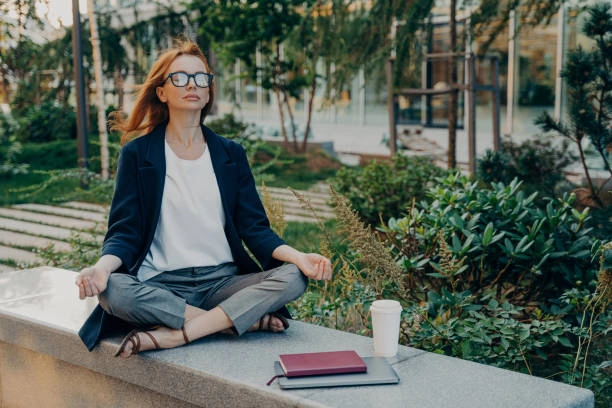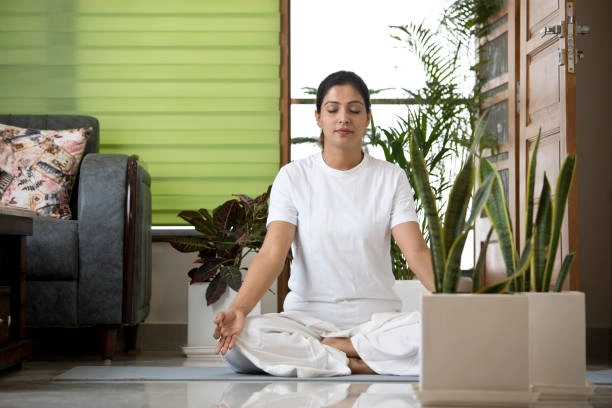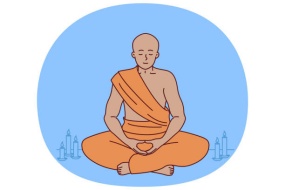Meditation and Sleep: Embracing Deep Relaxation
In today’s high-pressure society, everyone has many tasks to handle daily. To maintain our physical and mental well-being, taking some time each day for meditation is a great option. There are two major systems of meditation:
- Body Regulation: Achieving peace, focus, and unity of the mind through relaxation, smoothness, and harmony of the body.
- Mind Cultivation: Achieving relaxation, smoothness, and harmony of the body through the peace, focus, and unity of the mind.
The breath-counting method belongs to the latter system, focusing on cultivating the mind. It is also an introductory method for beginners.

Improving Sleep through Meditation
-
Creating a Calm Sleep Environment
Keep the bedroom quiet, dark, and cool, using a comfortable mattress and pillows.
-
Establish a Consistent Practice Time
Try to practice yoga at the same time each day to help regulate your biological clock.
-
Focus on Breathing
During yoga practice, focus on deep breathing to relax both body and mind. Avoid intense practice close to bedtime and opt for gentler poses to prevent excessive fatigue.
-
Develop Good Sleep Habits
In addition to yoga practice, maintain a regular sleep schedule, avoid caffeine, and limit liquid intake at night.
-
Three-Minute Breathing Space Exercise
When feeling physically or mentally fatigued at work or during study, pause to observe your breath and body sensations. Adopt an upright and dignified posture, either sitting or standing, close your eyes, and direct your awareness inward. Ask yourself about your current experience, thoughts, feelings, and bodily sensations.
-
Mindful Breathing Meditation
Sit in a comfortable position and focus on the sensation of air entering and leaving your nostrils or the rise and fall of your abdomen as you breathe. When thoughts, emotions, or memories arise, simply observe them and gently return your attention to your breath, repeatedly bringing your focus back to the nose or abdomen.
-
Body Scan Meditation
Lie down or sit comfortably and sequentially guide your attention to different parts of your body, starting from your feet and moving to the top of your head, then back down again. This practice increases awareness of bodily sensations. If discomfort arises, notice the sensation without resisting or denying it, building tolerance for pain.

Improving Sleep with Yoga Nidra
Yoga Nidra is an ancient and highly effective relaxation technique. It allows you to enter a deep state of relaxation while staying fully conscious. During this practice, you focus completely while relaxing the body. Although different from regular sleep, this method teaches you how to truly relax—physically and mentally—connecting deeply with yourself and understanding your body’s real needs, thus improving sleep quality.
Steps for Practicing Yoga Nidra
-
Supine Relaxation Pose
- Lie on your back with your hair accessories removed to avoid strain on the neck.
- Slightly tuck your chin, allowing the back of the neck to stretch towards the floor.
- Place your arms diagonally beside your body, palms facing up.
- Spread your lower back and move your hips slightly outward, allowing your thighs, knees, and feet to naturally fall outward as your whole body sinks into relaxation.
-
Guided Meditation with Sound
- Use voice guidance to help practitioners enter a relaxed state.
- Choose soothing music or natural sounds, like waves or rain, as background music.
-
Breath Control
- Regulate breathing to help relax the body.
- Use techniques like deep breathing or throat breathing to make the breath calm and deep.
-
Body Awareness
- Feel each part of your body, starting from the head and gradually relaxing down to the feet.
- Identify tension points in your body and use deep breathing and relaxation to release them.
-
Relaxing Each Body Part
- Sequentially relax all parts of the body, such as toes, calves, thighs, hips, lower back, upper back, shoulders, neck, and head.
-
Focus on Breathing
- Concentrate on your breath and feel the air moving in and out, making your breath smooth and deep.
-
Sense Pulse, Blood Circulation, and Energy Flow
- Feel the pulse, blood flow, and energy moving throughout your body, further relaxing both body and mind.
-
Positive Mental Suggestions
- Reinforce relaxation with positive affirmations such as “I am relaxed” or “My body is healthy.”
When practicing Yoga Nidra, choose a quiet and comfortable environment, avoiding direct drafts and strong light. You can also customize the practice to suit your needs and body condition, choosing the most appropriate methods and practice times for yourself.







